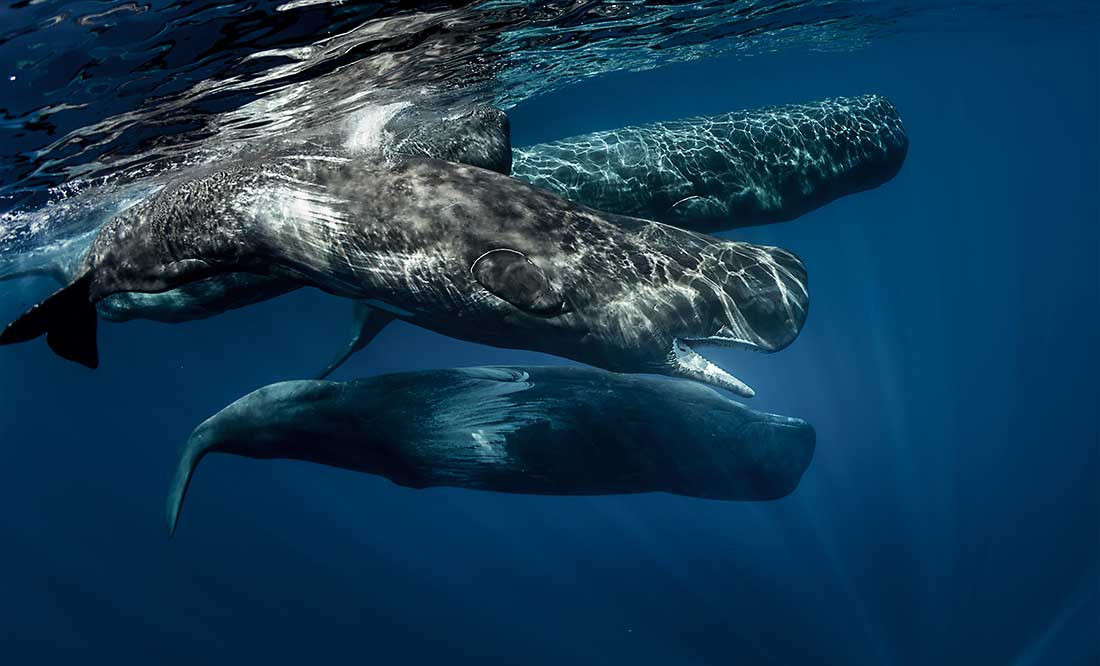April has arrived upon our brilliant green hills. The soft afternoon mists now cloak the high reaches of the rain forest, and over the winter months the rusty, dusty trails that weave through the pastures have turned a rich chocolate brown and have softened underfoot. Rainbows have become frequent companions to the hikers with their bright cheeks and quick smiles high above the village. The blades of afternoon light seem to splinter among the clouds floating like icebergs and crowding the blue rivers far above our heads. As always, Waimea is all about the weather, and in Springtime the weather swiftly changes, almost like a dancer changing steps and swirling across the blue face of the ocean.
Out here in the north Pacific, there is really nothing to impede the weather from doing whatever it pleases. This is the time of year that our giant equatorial weather system begins to warm up and flex its summer muscles. At the same time, the arctic polar bear that has been creating the frigid storms between Hawaii and the Aleutians is struggling to retain its cold claws and icy winds. In Waimea we enjoy the blessings of sweet, fresh ocean breezes as well as the bracing breath of the winter gales that charge across the broad reaches of the empty sea. This winter has been unusually calm, and Kawaihae Bay has been home to humpbacks, singing, leaping and giving birth in the sparkling shallows.
There has been an annual pod of sperm whales far off shore in the very deep channel canyons as well. They lie on the surface like giant locomotives with their oblique spouts steaming above the endless swells. There is something special about the great sperm whales in their self-imposed seclusion. They stay close together, speaking quietly to each other, and their secrets are complete. A fellow fisherman once told me that he had seen one steaming down the channel, as fast as a ship, splitting the whitecaps into a mist full of rainbows. That image sticks in the mind like nothing else.
Not long ago I wrote about the startling discovery that sperm whales do not grasp their prey with their teeth. In fact only the big males have teeth at all. Instead, they crush their prey with the huge muscles in their throats. The big whale teeth are just for showing off and fighting each other.
Soon we will know a whole lot more about sperm whales than we do now, and that is because of the satellite tagging program they are using for great white sharks. The great white sharks that are tagged off Mexico swim to an area between Hawaii and Central America that the scientists call the “Shared Offshore Feeding Area”, or SOFA. As it turns out there are lots and lots of sperm whales in the SOFA too, which will make them easier to find and study.
April usually brings the first schools of ono into our near shore waters as the whales take off for cooler climates. These beautiful silver torpedoes were first made popular in our restaurants by “Burns” Bree (RIP) when he was executive chef at the brand new Mauna Kea Beach Hotel back in the 1960’s. In those days tourists wanted only mahimahi, and since there wasn’t much of a commercial market for ono, it was cheap and plentiful. Burns changed all that by serving ono in Hawaii’s most prestigious hotel, and now it is very valuable indeed!
One of the great blessings of living in Waimea is enjoying the bounty of the hills and the sea alike. Many years ago we took a morning of pheasant hunting and an afternoon of big game fishing, but that is a story for another day.
May April bring you health, wealth and wisdom!

